 W
WAn American Viticultural Area (AVA) is a designated wine grape-growing region in the United States, providing an official appellation for the mutual benefit of wineries and consumers. Winemakers frequently want their consumers to know about the geographic pedigree of their wines, as wines from a particular area can possess distinctive characteristics. Consumers often seek out wines from specific AVAs, and certain wines of particular pedigrees can claim premium prices and loyal customers. If a wine is labeled with an AVA, at least 85% of the grapes that make up the wine must have been grown in the AVA, and the wine must be fully finished in the state where the AVA is located.
 W
WAnonymous works are works, such as art or literature, that have an anonymous, undisclosed, or unknown creator or author. In the case of very old works, the author's name may simply be lost over the course of history and time. There are a number of reasons anonymous works arise.
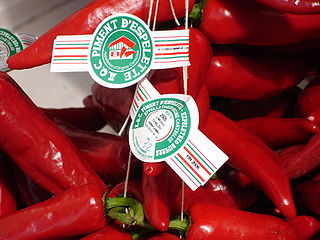 W
WIn France, the appellation d'origine contrôlée is a certification of authenticity granted to certain geographical indications for wines, cheeses, butters, and other agricultural products, under the auspices of the Institut national de l'origine et de la qualité (INAO), based upon the terroir and a form of geographic protectionism. Most products with an AOC designation are also Protected Designations of Origin (PDO)/Appelation d'orrigine protégée (AOP) under EU law and UK law. For those products, only the PDO or AOP designation can be used. However, wines with a PDO/AOP status can still use the French AOC designation.
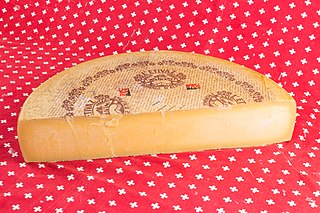 W
WIn Switzerland, the appellation d'origine protégée is a geographical indication protecting the origin and the quality of traditional food products other than wines.
 W
WThe Church of Spiritual Technology (CST) is a California 501(c)(3) non-profit corporation, incorporated in 1982, which owns all the copyrights of the estate of L. Ron Hubbard and licenses their use. CST does business as L. Ron Hubbard Library.
 W
WClean Tech Law contemplates a diverse set of legal and policy issues related to the development and commercialization of clean technology. These issues range from conventional natural resources law to cutting-edge intellectual property issues related to synthetic genomics and advanced materials. Clean tech law could also address issues and conflicts surrounding the placement of such technologies.
 W
WA collective work is a work that contains the works of several authors assembled and published under the direction of one natural or legal person who owns the copyright in the work as a whole. Definitions vary considerably from one country to another, but usually treat ownership of the work as a whole as distinct from ownership of the individual contributions, so the individual authors may retain the right to publish their work elsewhere. It is common for publication of articles on the Internet, when isolated from the context of the overall work, to be considered to be outside of the standard agreement between the author and the owner of the collective work.
 W
WA collective work under the copyright law of France is a collective work that contains the works of several authors created, assembled, harmonized and published under the direction of a person or organization who owns the commercial and moral rights of the work as a whole. The work as a whole is distinct from the individual contributions, which are owned by the authors. It is common for publication of articles on the Internet, in a different context and layout from the printed work, to be considered to be outside the standard agreement between the author and the owner of the collective work.
 W
WA collective work in the copyright law of the United States is a work that contains the works of several authors assembled and published into a collective whole. The owner of the work has the property rights in the collective work, but the authors of the individual works may retain rights in their contributions. Electronic reproduction of the whole work is allowed, but electronic reproduction of the individual works on their own, outside the context of the work as a whole, may constitute an infringement of copyright.
 W
WThe Copyright Clause describes an enumerated power listed in the United States Constitution.
 W
WA Creative Commons (CC) license is one of several public copyright licenses that enable the free distribution of an otherwise copyrighted "work". A CC license is used when an author wants to give other people the right to share, use, and build upon a work that the author has created. CC provides an author flexibility and protects the people who use or redistribute an author's work from concerns of copyright infringement as long as they abide by the conditions that are specified in the license by which the author distributes the work.
 W
WIntellectual property (IP) is a category of property that includes intangible creations of the human intellect. There are many types of intellectual property, and some countries recognize more than others. The most well-known types are copyrights, patents, trademarks, and trade secrets. The modern concept of intellectual property developed in England in the 17th and 18th centuries. The term "intellectual property" began to be used in the 19th century, though it was not until the late 20th century that intellectual property became commonplace in the majority of the world's legal systems.
 W
WThe following four classifications of wine constitute the Italian system of labelling and legally protecting Italian wine:Denominazione di origine, Indicazione geografica tipica, Denominazione di origine controllata, and Denominazione di origine controllata e garantita.
 W
WDesign is a form of intellectual property right concerned with the visual appearance of articles which have commercial or industrial use. The visual form of the product is what is protected rather than the product itself. The visual features protected are the shape, configuration, pattern or ornamentation. A design infringement is where a person infringes a registered design during the period of registration. The definition of a design infringement differs in each jurisdiction but typically encompasses the purported use and make of the design, as well as if the design is imported or sold during registration. To understand if a person has infringed the monopoly of the registered design, the design is assessed under each jurisdiction's provisions. The infringement is of the visual appearance of the manufactured product rather than the function of the product, which is covered under patents. Often infringement decisions are more focused on the similarities between the two designs, rather than the differences.
 W
WDistrictus Austriae Controllatus, DAC, is a classification for regionally typical quality wine in Austria. It is loosely modelled on the French Appellation d'Origine Contrôlée (AOC) system, and is coupled with a ripeness-based classification scale that shares a lot of nomenclature with the German Prädikat system. Thus, if a label states the winegrowing region followed by the letter combination “DAC” we are talking about a regionally typical quality wine. All Austrian quality wines have a round, red and white striped "Banderole" on the capsule, which ensures, that it has been inspected and approved by the government tasting authority and fulfills the requirements for “Qualitätswein”, such as maximum yields per hectare, minimum must weight and alcohol levels and guaranteed origin of the grapes.
 W
WIntellectual property refers to an intangible property right which is enjoyed by law after the engagement in intellectual creative conducts, which cover a range of intangible property rights: patent, copyrights, trademark, design right and an indication of the original. Europe Union regulates the range of the law, including three different interdependent serious legislation, primary and secondary legislation, and law in cases. The empty area regulated by individual national members is not in the coverage of EU law. Based on the EU treaties, EU members each have the right to transfer and implement the discretion of EU law. Therefore, compared to conducting the application to the separate countries in EU it harbors more advantages to apply for the European patent office when seeking to obtain more extensive patent protection. That is to say, at each signatory of the Convention of European Patent, the holder who are granted the patent is given the equivalent right to the national patent of the countries.
 W
WA geographical indication (GI) is a name or sign used on products which corresponds to a specific geographical location or origin. The use of a geographical indication, as an indication of the product's source, acts as a certification that the product possesses certain qualities, is made according to traditional methods, or enjoys a good reputation due to its geographical origin.
 W
WThree European Union schemes of geographical indications and traditional specialties, known as protected designation of origin (PDO), protected geographical indication (PGI), and traditional specialities guaranteed (TSG), promote and protect names of agricultural products and foodstuffs. Products registered under one of the three schemes may be marked with the logo for that scheme to help identify those products. The schemes are based on the legal framework provided by the EU Regulation No 1151/2012 of the European Parliament and of the Council of 21 November 2012 on quality schemes for agricultural products and foodstuffs. This regulation applies within the EU as well as in Northern Ireland. Protection of the registered products is gradually expanded internationally via bilateral agreements between the EU and non-EU countries. It ensures that only products genuinely originating in that region are allowed to be identified as such in commerce. The legislation first came into force in 1992. The purpose of the law is to protect the reputation of the regional foods, promote rural and agricultural activity, help producers obtain a premium price for their authentic products, and eliminate the unfair competition and misleading of consumers by non-genuine products, which may be of inferior quality or of different flavour. Critics argue that many of the names, sought for protection by the EU, have become commonplace in trade and should not be protected.
 W
WThe German wine classification system puts a strong emphasis on standardization and factual completeness, and was first implemented by the German Wine Law of 1971. Nearly all of Germany's vineyards are delineated and registered as one of approximately 2,600 Einzellagen, and the produce from any vineyard can be used to make German wine at any quality level, as long as the must weight of the grapes reaches the designated minimum level. As the current German system does not classify vineyards by quality, the measure of wine ’quality’ is the ripeness of the grapes alone.
 W
WInformation Doesn't Want to Be Free is a 2014 non-fiction book by science fiction writer and Internet activist Cory Doctorow. In the book, he advocates for less restrictions on intellectual property on the Internet. He states that "[i]nformation doesn’t want to be free,...people do.”
 W
WINID is an acronym for Internationally agreed Numbers for the Identification of (bibliographic) Data. INID codes are used by patent offices worldwide for indicating specific bibliographic data items on the title pages of patents and patent application publications. INID codes use Arabic numerals, and so are language-independent. For example, number (30) indicates priority data, and (51) technical area according to the International Patent Classification (IPC).
 W
WIntellectual property (IP) is a category of property that includes intangible creations of the human intellect. There are many types of intellectual property, and some countries recognize more than others. The most well-known types are copyrights, patents, trademarks, and trade secrets. The modern concept of intellectual property developed in England in the 17th and 18th centuries. The term "intellectual property" began to be used in the 19th century, though it was not until the late 20th century that intellectual property became commonplace in the majority of the world's legal systems.
 W
WIntellectual property (IP) is a category of property that includes intangible creations of the human intellect. There are many types of intellectual property, and some countries recognize more than others. The most well-known types are copyrights, patents, trademarks, and trade secrets. The modern concept of intellectual property developed in England in the 17th and 18th centuries. The term "intellectual property" began to be used in the 19th century, though it was not until the late 20th century that intellectual property became commonplace in the majority of the world's legal systems.
 W
WiRunway is a boutique technology, finance and litigation consulting firm with primary expertise in intellectual property. It specializes in patent litigation, patent valuation, damages, patent portfolio management and technology due diligence advisory to both law firms and corporations. The company has offices in Austin, Texas; Palo Alto, California; Denver, Colorado and Bangalore, India.
 W
WKorean Open Access License is a copyleft license developed by IPLeft in South Korea based on South Korean law, which enable authors to give different kind of permission to others.
 W
WThe Lanham (Trademark) Act (Pub.L. 79–489, 60 Stat. 427, enacted July 5, 1946, codified at 15 U.S.C. § 1051 et seq. is the primary federal trademark statute of law in the United States. The Act prohibits a number of activities, including trademark infringement, trademark dilution, and false advertising.
 W
WLexInnova Technologies, LLC, is a legal services and technology consulting company headquartered in Houston, Texas. It specializes in providing patent litigation consulting, patent analytics, eDiscovery, legal due diligence, license management, intellectual property advisory, and technology consulting services to law firms and corporations. The company also has offices at Cupertino, California; Houston, Texas and Gurgaon, India.
 W
WThe Lisbon Agreement for the Protection of Appellations of Origin and their International Registration, signed on 31 October 1958, ensures that in member countries, appellations of origin receive protection when are protected in their country of origin. It lays down provisions for what qualifies as an appellation of origin, protection measures and establishes an International Register of Appellations of Origin, run by the World Intellectual Property Organization. The agreement came into force in 1966, and was revised at Stockholm (1967) and amended in 1979 and 2015. As of May 2015, 30 states are party to the convention and 1000 appellations of origin has been registered.
 W
WThe following is a list of French wines that are entitled to use the designation Appellation d'Origine Contrôlée (AOC) on their label. There are currently over 300 appellations acknowledged by the INAO.
 W
WThis is a list of French cheeses documenting the varieties of cheeses, a milk-based food that is produced in wide-ranging flavors, textures, and forms, which are found in France. In 1962, French President Charles de Gaulle asked, "How can you govern a country which has two hundred and forty-six varieties of cheese?" There is immense diversity within each variety of cheese, leading some to claim closer to anywhere between 1,000 and 1,600 distinct types of French cheese. French cheeses are broadly grouped into eight categories, 'les huit familles de fromage'.
 W
WA geographical indication (GI) is a name or sign used on certain products which corresponds to a specific geographical location or origin. India, as a member of the World Trade Organization (WTO), enacted the Geographical Indications of Goods Act, 1999 has come into force with effect from 15 September 2003. GIs have been defined under Article 22 (1) of the WTO Agreement on Trade-Related Aspects of Intellectual Property Rights (TRIPS) Agreement as: "Indications which identify a good as originating in the territory of a member, or a region or a locality in that territory, where a given quality, reputation or characteristic of the good is essentially attributable to its geographic origin."
 W
WIn 1996, 19 cheeses from Greece were awarded Protected Designation of Origin (PDO) status defining their areas of origin and methods of production. Feta received the same status in 2002 and Xygalo Sitias in 2008. The designated cheeses are made from fresh milk by traditional methods. They contain predominantly sheep or sheep and goat's milk.
 W
WThis List of Italian PDO/DOP cheeses includes all the Italian cheeses which have Protected Designation of Origin, status under European Union regulations. All of the formerly existing "DO" cheeses were registered in the EU as "PDO/DOP" cheeses during the course of 1996. They have the Italian abbreviation for PDO (DOP) written on the cheese.
 W
WA number of United Kingdom food and drink products have been granted protected geographical status under UK law and European Union law. Protection of geographical indications is granted to names that indicate geographical origin both inside and outside the United Kingdom. A number of geographical indications for food and drink products originating in the Crown dependencies, which are not part of the UK, are also protected under the British law. These are also listed in this article.
 W
WThe Max Planck Institute for Innovation and Competition is a Munich, Germany, based research institute, which is part of the Max Planck Society for the Advancement of Science, which manages 84 institutes and research institutions. The institute was formerly known as Max Planck Institute for Intellectual Property and Competition Law and the name was changed to Max Planck Institute for Innovation and Competition in view of the broader focus of the institute and its interdisciplinary character. The major research areas of the institute are intellectual property, innovation and competition. Apart from providing research support for scholars from across the world, the institute also publishes the International Review of Intellectual Property and Competition Law (IIC).
 W
WThe United States of Mexico have 18 Designations of Origin, granted by the Mexican Institute of Industrial Property (IMPI), which also issues declarations to protect the product, register the brand and authorize its use. However, these names are not created by the IMPI, but rather "exist because of factual situations; that is, they are first used, famous and recognized by the public that consumes them, and later, they are protected through the corresponding declaration".
 W
WMicrosoft Corp. v. Shah was an Anticybersquatting Consumer Protection Act (ACPA) case heard before the United States District Court for the Western District of Washington. Microsoft sued the defendants, Amish Shah and others, for, among other charges, contributory cybersquatting for encouraging others, through videos and software, to infringe on Microsoft's trademarks. The case was settled out of court in July 2011 after judge Ricardo S. Martinez denied Shah's motion for dismissal. Legal observers suggested that, if upheld, the case would prove notable for the court's expansion of the ACPA liability to include contributory cybersquatting.
 W
WFrancis Fabien Michel Muguet (1955–2009) was a French chemist who advocated open access to information.
 W
WA non-disclosure agreement (NDA), also known as a confidentiality agreement (CA), confidential disclosure agreement (CDA), proprietary information agreement (PIA), secrecy agreement (SA), or non-disparagement agreement, is a legal contract or part of a contract between at least two parties that outlines confidential material, knowledge, or information that the parties wish to share with one another for certain purposes, but wish to restrict access to. Doctor–patient confidentiality, attorney–client privilege, priest–penitent privilege and bank–client confidentiality agreements are examples of NDAs, which are often not enshrined in a written contract between the parties.
 W
WOpen knowledge is knowledge that is free to use, reuse, and redistribute without legal, social, or technological restriction. Open knowledge organizations and activists have proposed principles and methodologies related to the production and distribution of knowledge in an open manner. Knowledge is interpreted broadly to include data, content, and both general and scientific information.
 W
WThe open-core model is a business model for the monetization of commercially produced open-source software. Coined by Andrew Lampitt in 2008, the open-core model primarily involves offering a "core" or feature-limited version of a software product as free and open-source software, while offering "commercial" versions or add-ons as proprietary software.
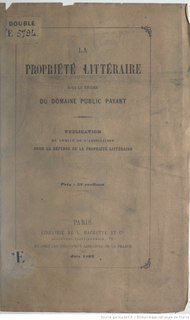 W
WPaying public domain is a copyright regime where copies, presentations or performances of a work that has entered the public domain are still subject to royalties, which are payable to the state or to an authors' association. The principle is that revenue from the work of long-dead artists should be used to support creativity of living artists.
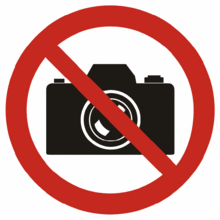 W
WThe intellectual property rights on photographs are protected in different jurisdictions by the laws governing copyright and moral rights. In some cases photography may be restricted by civil or criminal law. Publishing certain photographs can be restricted by privacy or other laws. Photography can be generally restricted in the interests of public morality and the protection of children.
 W
WPlain tobacco packaging, also known as generic, neutral, standardised or homogeneous packaging, is packaging of tobacco products, typically cigarettes, without any branding, including only the brand name in a mandated size, font and place on the pack, in addition to the health warnings and any other legally mandated information such as toxic constituents and tax-paid stamps. The appearance of all tobacco packs is standardised, including the colour of the pack.
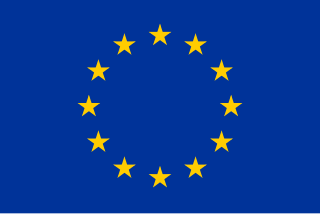 W
WThe European Union (EU) directive on criminal measures aimed at ensuring the enforcement of intellectual property rights (2005/0127/COD) was a proposal from the European Commission for a directive aimed "to supplement Directive 2004/48/EC of 29 April 2004 on the enforcement of intellectual property rights ". The directive was proposed on July 12, 2005 by the Commission of the European Communities.
 W
WProtected Designation of Origin (PDO) is the name of a type of Geographical Indication of the European Union and the United Kingdom aimed at preserving the designations of origin of food-related products. The designation was created in 1992 and its main purpose is to designate products that have been produced, processed and developed in a specific geographical area, using the recognized know-how of local producers and ingredients from the region concerned.
 W
WThe public domain consists of all the creative work to which no exclusive intellectual property rights apply. Those rights may have expired, been forfeited, expressly waived, or may be inapplicable.
 W
WQuality Wines Produced in Specified Regions is a quality indicator used within European Union wine regulations. The QWpsr category identifies wines with protected geographical indications and Protected designations of origin. The European Union regulates and defines the status of "quality wines" according to production method, management and geographical location. Its original, fundamental role is in differentiating quality wines from table wines, broadly in line with the system traditionally employed by the French government, amended to account for the preferences and methodology of Italian and German growers, among others in the EU.
 W
WThe Religious Technology Center (RTC) is an American non-profit corporation that was founded in 1982 by the Church of Scientology to control and oversee the use of all of the trademarks, symbols and texts of Scientology and Dianetics. Although RTC controls their use, those works are owned by another corporation, the Church of Spiritual Technology which is doing business as L. Ron Hubbard Library, registered in Los Angeles County, California.
 W
WIn computing, and specifically peer-to-peer file sharing, seeding is the uploading of already downloaded content for others to download from. A peer, a computer that is connected to the network, becomes a seed when having acquired the entire set of data, it begins to offer its upload bandwidth to other peers attempting to download the file. This data consists of small parts so that seeds can effectively share their content with other peers, handing out the missing pieces. A peer deliberately chooses to become a seed by leaving the upload task active once the content has downloaded. The motivation to seed is mainly to keep the file being shared in circulation and a desire to not act as a parasite. The opposite of a seed is a leech, a peer that downloads more than they upload.
 W
WA service mark or servicemark is a trademark used in the United States and several other countries to identify a service rather than a product.
 W
WThe Special 301 Report is prepared annually by the Office of the United States Trade Representative (USTR) that identifies trade barriers to United States companies and products due to the intellectual property laws, such as copyright, patents and trademarks, in other countries. By April 30 of each year, the USTR must identify countries which do not provide "adequate and effective" protection of intellectual property rights or "fair and equitable market access to United States persons that rely upon intellectual property rights".
 W
WSweat of the brow is an intellectual property law doctrine, chiefly related to copyright law. According to this doctrine, an author gains rights through simple diligence during the creation of a work, such as a database, or a directory. Substantial creativity or "originality" is not required.
 W
WA trademark is a type of intellectual property consisting of a recognizable sign, design, or expression which identifies products or services of a particular source from those of others, although trademarks used to identify services are usually called service marks. The trademark owner can be an individual, business organization, or any legal entity. A trademark may be located on a package, a label, a voucher, or on the product itself. For the sake of corporate identity, trademarks are often displayed on company buildings. It is legally recognized as a type of intellectual property.
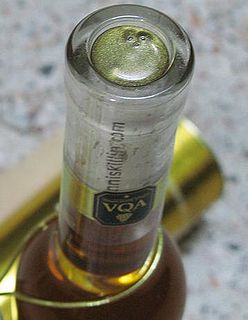 W
WVintners Quality Alliance, or VQA, is a regulatory and appellation system which guarantees the high quality and authenticity of origin for Canadian wines made under that system in British Columbia and Ontario. It is similar to regulatory systems in France (AOC), Spain (DO), Italy (DOC), and Germany (QmP). The VQA system allows for sub-appellations, by which the grapes for wines are sourced from extremely specific geographical locations with different soil and climate. This is in accordance with the concept of terroir.
 W
WWIPO Lex is an online database of national legislation and international treaties in the field of intellectual property. Maintenance and development of the database is exercised by the World Intellectual Property Organization.
 W
WWorld Intellectual Property Day is observed annually on 26 April. The event was established by the World Intellectual Property Organization (WIPO) in 2000 to "raise awareness of how patents, copyright, trademarks and designs impact on daily life" and "to celebrate creativity, and the contribution made by creators and innovators to the development of societies across the globe". 26 April was chosen as the date for World Intellectual Property Day because it coincides with the date on which the Convention Establishing the World Intellectual Property Organization entered into force in 1970.
 W
WZeniMax v. Oculus is a civil lawsuit filed by ZeniMax Media against Oculus VR on charges of theft of intellectual property relating to Oculus' virtual reality device, the Oculus Rift. The matter was settled with a private out-of-court agreement by December 2018.